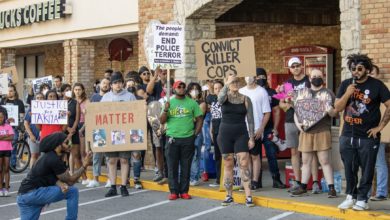On Aug. 4, New Jersey State Prison went on lockdown for the third time in 17 months. The lockdown followed the alleged discovery of a loaded handgun inside the prison. The prisoners were on lockdown for three weeks while the prison was searched.
Prison authorities ended the lockdown on Aug. 24 after they were unable to locate any other weapons. To date, the
 |
The inmates said that numerous human rights violations occurred during the lockdown. In a statement to the New Jersey Department of Corrections, state legislators, and prison rights advocates, they stated that conditions inside were “reminiscent of Abu Ghraib.”
The statement and other letters have revealed the prisoners’ dire reality. Their cells have been ransacked. They have been strip-searched. They have been forced to strip outside of their cells. They have been marched around the prison in large groups. They have been forced to run a gauntlet through corrections officers who have attack dogs at full length of the leash. Many have been beaten severely.
About 1,400 inmates have threatened to commence a hunger strike unless “prison officials agree to discuss meaningful changes.” The changes include resuming recreation time, restoring group activities and repealing the ban on hardcover books.
Prison as a tool of oppression
This threatened strike and the prisoners’ demand for justice are natural outcomes of the oppression suffered by working-class prisoners, many of whom are Black and Latino. This systematic oppression can be seen in the massive U.S. incarceration rate today.
The United States has the largest population rate in prison in the world today. According to a July 2003 Justice Department report, nearly 2.2 million people are behind bars today; almost 5 million more are on probation or parole.
The number of working class families who don’t have someone caught up “in the system” continues to shrink—especially in the African American and other oppressed communities.
The number of people in prison or on parole in the United States has reached an all-time high. A July 26 Associated Press report stated that a record 6.9 million adults were “in the system.” This amounts to 1 in 32 adults in the country.
The total population on probation, in jail or prison, or on parole has multiplied by six in the last 20 years, according to a Bureau of Justice Statistics report.
Compare that to the rest of the world. According to the World Prison Population List, the United States has the highest prison population rate in the world: 701 prisoners per 100,000. It is followed relatively distantly by Russia, Belarus and the U.S. Virgin Islands.
Of the imperialist countries, the nearest to the United States is the United Kingdom, far behind with 141 prisoners per 100,000. The average worldwide rate is 80 per 100,000.
Not surprisingly, the amount of money spent in jails and prisons has jumped from $9 billion in 1982 to a whopping $57 billion in 2001, according to the Bureau of Justice Statistics. This is a 530 percent increase.
The same report shows an increase in police spending from $19 billion in 1982 to $72 billion in 2001, a 280 percent
 |
‘Tear down the walls’
Throughout the history of the United States prison system, there have been numerous uprisings and revolts against the atrocious conditions. These revolts are really revolts against the capitalist state, of which prisons are an important part.
Under capitalism, the state uses prisons, along with cops, courts, the military and other repressive institutions, to oppress workers. The state is a tool of repression by one class against another.
Prisons are also concentration camps for the poor and the unemployed. The bosses hope that by warehousing the poor, they can prevent what could be mass rebellions if all these unemployed workers were on the streets demanding jobs.
But in the end, just as the socialization of production during capitalist development leads to working class unity and organization, the mass concentration in confinement of the most oppressed will lead to unity of purpose, tactics and training behind prison walls.
The 1971 Attica prison uprising showed the possibilities of strength and organization inside prison walls. Malcolm X became a revolutionary in prison. Mumia Abu-Jamal works every day to bring revolutionary consciousness to all of our brothers and sisters behind bars.
There are few crimes more glaring than what is being perpetrated against our class by the capitalist bosses and their penal system. The demands of working-class solidarity and unity should extend to our whole class, inside and outside of the prison system.
That’s why it is important to support the prisoners’ resistance in the Trenton, N.J., prison. Supporting this struggle and others like it, including the fight to free political prisoners like Mumia and Leonard Peltier, are the first steps to winning the goal of “tearing down the walls”—historically one of the first tasks of any victorious revolution.
Click here to read about the Attica uprising.
Click here to read more about the U.S. prison-industrial complex.






